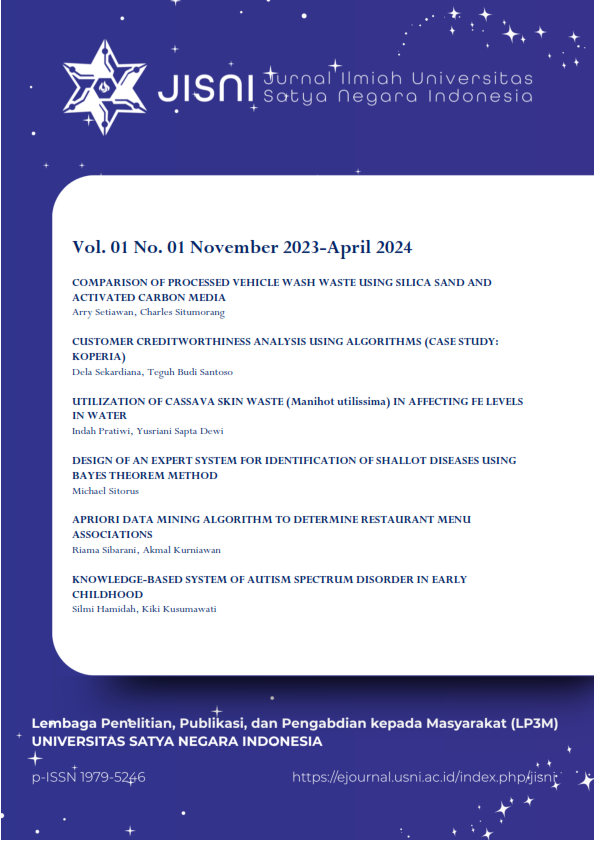UTILIZATION OF CASSAVA SKIN WASTE (Manihot utilissima) IN AFFECTING FE LEVELS IN WATER
Keywords:
Cassava Peel, Activated Carbon, Heavy Metals, Atomic Adsorption SpectrofotometricAbstract
This research is purposed to determine adsorbtion of activated carbon which is made from cassava peel to reduce heavy metals such as ion Fe in the water. The process is consist two main stages which is carbonisation and activation. The carbonization process was carried on different temperature such as 300, 400, 500, 550, 600 ˚C. Then a resulted 5 samples was soaked in 30% NaOH liquid for 1 hours. As the result the lowest water degree is 3,63% which is furnaced by 500˚C. Testing activated carbon absorption to heavy metals such as ion Fe using atomic adsorption spectrofotometric (AAS). The result showed that the most optimum adsorption is activated carbon that furnaced by 600 ˚C with value Effectiviy 51,97%
References
Bairagi, S., Gustafson, C. R., Custodio, M. C., Ynion, J., & Demont, M. (2021). What drives consumer demand for packaged rice? Evidence from South and Southeast Asia. Food Control, 129, 108261. https://doi.org/10.1016/j.foodcont.2021.108261
Custodio, M. C., Demont, M., Laborte, A., & Ynion, J. (2016). Improving food security in Asia through consumer-focused rice breeding. Global Food Security, 9, 19–28. https://doi.org/10.1016/j.gfs.2016.05.005
Fan, L., Aspy, N. N., Smrity, D. Y., Dewan, M. F., Kibria, M. G., Haseeb, M., Kamal, M., & Rahman, M. S. (2024). Moving towards food security in South Asian region: Assessing the role of agricultural trade openness, production and employment. Heliyon, 10(13), e33522. https://doi.org/10.1016/j.heliyon.2024.e33522
Fang, Q., & Li, Z. (2022). Cultural ecology cognition and heritage value of huizhou traditional villages. Heliyon, 8(12), e12627. https://doi.org/10.1016/j.heliyon.2022.e12627
Hussin, H. (2014). Bridging The Past and Present Through Food Heritage among Peranakan Chinese of the Straits of Malacca. Journal of Southeast Asian Studies, 19(1), 218–230. https://doi.org/10.22452/jati.vol19no1.14
Lin, B., & Wang, Y. (2025). Climate change and China’s food security. Energy, 318, 134852. https://doi.org/10.1016/J.ENERGY.2025.134852
Pérez-Lloréns, J. L., & Brun, F. G. (2023). “Sea rice”: From traditional culinary customs to sustainable crop for high-end gastronomy? International Journal of Gastronomy and Food Science, 34, 100814. https://doi.org/10.1016/j.ijgfs.2023.100814
Serafín, Č., Dostál, J., & Havelka, M. (2015). Inquiry-Based Instruction in the Context of Constructivism. Procedia - Social and Behavioral Sciences, 186, 592–599. https://doi.org/10.1016/j.sbspro.2015.04.050
Downloads
Published
How to Cite
Issue
Section
License
Copyright (c) 2025 Indah Pratiwi, Yusriani Sapta Dewi

This work is licensed under a Creative Commons Attribution-NonCommercial-ShareAlike 4.0 International License.






